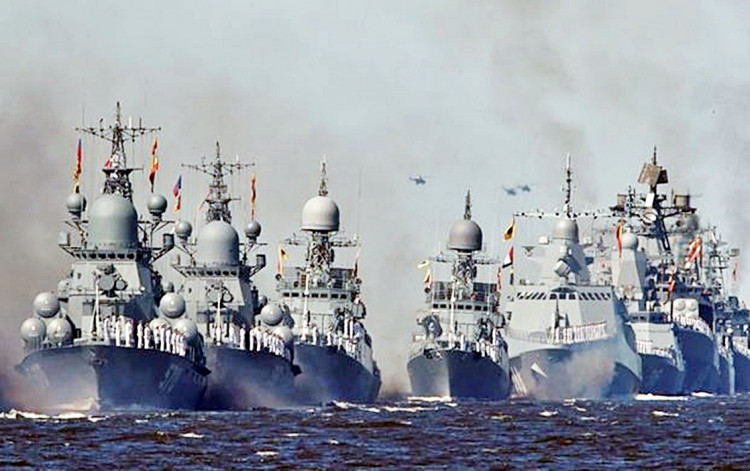The Russian Navy (Voyenno-Мorskoi Flot or VMF) is moving closer to deploying three new weapons systems intended to further offset the the huge numerical and technological advantage possessed by its main adversary, the U.S. Navy.
Still in various stages of testing and development are the huge RFS Belgorod (K-329) Russian nuclear submarine cruiser; the Poseidon (KANYON) underwater nuclear missile drone carried by the Belgorod and the hypersonic 3M22 Zircon anti-ship missile for two of the VMF's heavy cruisers. Russia's Ministry of Defense said these systems are in their the final phase of testing.
Nonetheless, Russian President Vladimir Putin made a big deal of these new weapons systems during a patriotic speech celebrating Navy Day on July 26. He confirmed the VMF will soon be armed with Poseidon and 3M22 Zircon. He also talked about Russia's new generation nuclear missiles, which he claims are unequaled and can strike targets almost anywhere in the world.
"The widespread deployment of advanced digital technologies that have no equals in the world, including hypersonic strike systems and underwater drones, will give the fleet unique advantages and increased combat capabilities" Putin said.
Putin revealed the VMF will receive 40 new warships and other vessels within the year. The defense ministry said testing of the Belgorod is underway. It also said testing of the Poseidon weapons systems is nearing completion. The Belgorod carries six of these weapons (also referred to as a torpedo), whose existence was revealed by Putin in 2018.
As far as is known, Poseidon (KANYON) is a torpedo-like device that can launch multiple nuclear warheads at American or NATO targets. It draws power from an onboard nuclear reactor and is so silent it's almost impossible to detect. Poseidon is a second-strike weapon.
On the other hand, Belgorod is the only submarine of its kind in the Russian Navy and the only one capable of deploying Poseidon.
Belgorod is the world's largest submarine with a length of 184 meters and a displacement of 14,700 tonnes surfaced. It has a speed of 32 knots and an endurance of four months. Belgorod is slated to patrol the frigid Arctic waters.
It's 11 meters longer than Russia's largest nuclear ballistic missile submarine belonging to the Akula-class (or Typhoon-class), of which only one is in active service with the VMF.
Russian media previously said Belgorod "is designed to carry out research missions. It will carry uninhabited deep-sea vehicles and bathyscaphes, as well as special scientific equipment. It will be engaged in studying the bottom of the Russian Arctic shelf, searching for minerals at great depths, and also laying underwater communications."
Russia claims its new hypersonic 3M22 Zircon anti-ship missile can attain Mach 8 (9,900 km/h). If true, this speed will make Zircon the fastest hypersonic missile on Earth.
The first operational 3M22 Zircons will be installed on the Kirov-class heavy missile cruisers, RFS Admiral Nakhimov (080) and RFS Pyotr Velikiy (099).
Zircon has a range of 450 kilometers. The warhead weight is unknown but will likely be heavier than the 200 kg warhead on India's BrahMos supersonic cruise missile. It's widely believed BrahMos II is the export version of the 3M22 Zircon.






